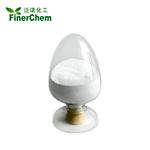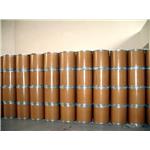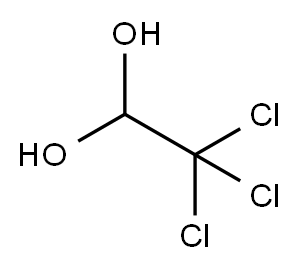Chloral Hydrate: Applications as Aedative Agent for Neurodiagnostic Procedures and its Dosage
May 11,2024
General Description
Chloral hydrate is a sedative agent used for neurodiagnostic procedures in children, showing effectiveness compared to oral promethazine but higher sedation failure rates than intravenous pentobarbital, rectal sodium thiopental, and music therapy. Chloral hydrate achieves sedation quicker than oral dexmedetomidine and oral hydroxyzine hydrochloride but slower than intravenous pentobarbital and intranasal midazolam. While associated with adverse events like desaturation and vomiting, Chloral hydrate also has benefits such as lower diastolic blood pressure and bradycardia risks. Dosage varies by age, with caution on habit formation and withdrawal symptoms upon discontinuation. Further research is needed to assess its impact comprehensively in pediatric neurodiagnostic procedures.

Figure 1. Chloral hydrate
Applications as a sedative agent
Chloral hydrate is a sedative agent that has been utilized for neurodiagnostic procedures in children. These investigations, which include brain neuroimaging and electroencephalography (EEG), are crucial for assessing neurodevelopmental disorders in pediatric patients. The successful completion of these procedures in children often requires the use of an appropriate sedative due to their inability to remain still throughout the process. A comprehensive review, encompassing 16 studies involving 2922 children, was conducted to evaluate the efficacy and adverse effects of chloral hydrate as a sedative agent for non-invasive neurodiagnostic procedures in children. The findings revealed several important insights. In comparison to oral promethazine, oral chloral hydrate demonstrated a lower sedation failure rate, indicating its effectiveness as a sedative agent for these procedures. However, when compared to intravenous pentobarbital, rectal sodium thiopental, and music therapy, chloral hydrate exhibited a higher sedation failure rate. The evidence for these outcomes was found to be of varying levels of certainty, suggesting the need for cautious interpretation. Additionally, the review highlighted that children who received oral chloral hydrate achieved adequate sedation in a shorter time frame when compared to those who received oral dexmedetomidine, oral hydroxyzine hydrochloride, and oral promethazine. However, the time to achieve adequate sedation was longer when compared to intravenous pentobarbital, intranasal midazolam, and intranasal dexmedetomidine. Furthermore, the use of chloral hydrate was associated with a higher risk of certain adverse events, such as desaturation, unsteadiness, vomiting, and crying during administration of sedation. However, it was also associated with a lower risk of adverse events such as diarrhea, lower mean diastolic blood pressure, drowsiness, vertigo, and bradycardia. The review concluded that while chloral hydrate demonstrated effectiveness in certain aspects, further research is needed to determine its effects on major clinical outcomes, safety profile, and adverse effects, especially oxygen desaturation. The findings underscore the importance of conducting additional studies to comprehensively assess the impact of chloral hydrate as a sedative agent for neurodiagnostic procedures in children, including its effects on successful procedure completion, the need for additional sedative agents, and the degree of sedation measured using validated scales. 1
Dosage
Chloral hydrate is a medication used to treat insomnia, induce sedation, and manage alcohol or drug withdrawal symptoms. The dosage varies depending on the condition being treated and the age of the patient. For adults with insomnia, the usual dosage is 500 mg to 1 g taken 15 to 30 minutes before bedtime. For sedation, adults can take 250 mg three times daily after meals, or 500 mg to 1 g 30 minutes before surgery. In pediatric patients, the dosage is determined by weight. For insomnia, children can take 50 mg/kg at bedtime, with a maximum dose of 1 g per dose and 1 g per day for infants, and 2 g per day for children. For sedation, the dosage ranges from 25 to 75 mg/kg per day divided every 6 to 8 hours, with a maximum dose of 500 mg per dose and 120 mg/kg or 1 g total for infants, and 2 g total for children. It's important to follow the doctor's instructions carefully and not to exceed the recommended dosage. Chloral hydrate can be habit-forming, so it should not be shared with others, especially those with a history of drug abuse. Additionally, abrupt discontinuation of chloral hydrate after long-term use can lead to withdrawal symptoms, so it's essential to consult a doctor on how to stop using it safely. 2
Reference
1. Fong CY, Lim WK, Li L, Lai NM. Chloral hydrate as a sedating agent for neurodiagnostic procedures in children. Cochrane Database Syst Rev. 2021; 8(8): CD011786.
2. Chloral hydrat. Drugs. 2014.
- Related articles
- Related Qustion
- Safety and Efficacy of Chloral Hydrate in Outpatient Pediatrics for Sedation Jan 17, 2024
Chloral hydrate is a clinical sedative drug used for the short-term treatment of insomnia and to relieve anxiety and induce sleep prior to surgery.
- Chloral hydrate:a sedative-hypnotic drug Dec 21, 2023
Chloral hydrate, covering its introduction, historical applications, recent developments, synthesis,and safety considerations.
- What is Chloral hydrate? Oct 7, 2023
Chloral hydrate is always used as a hypnotic and sedative agent. However, due to its toxicity and side effects, Dexmedetomidine is being considered as a suitable alternative.
Dicyclohexylamine inhibits bacterial growth via spermidine synthase, showing sensitivity in Streptococcus uberis, with potential therapeutic applications and LC-MS/MS detection in honey.....
May 11,2024API2-Iodobenzoic acid enables synthesis of crucial compounds for medical advancement, enhancing diagnostic techniques and potential treatments in medicinal chemistry.....
May 11,2024APIChloral hydrate
302-17-0You may like
- Chloral hydrate
-

- $0.00 / 25KG
- 2024-05-31
- CAS:302-17-0
- Min. Order: 1KG
- Purity: ≥98%
- Supply Ability: 500mt/year
- Chloral hydrate
-

- $7.90 / 1000kg
- 2024-05-24
- CAS:302-17-0
- Min. Order: 1kg
- Purity: 99%
- Supply Ability: 1t
- Chloral hydrate
-

- $10.00 / 1kg
- 2024-05-23
- CAS:302-17-0
- Min. Order: 1kg
- Purity: 98%
- Supply Ability: 20tons




